Know the Chefs
Well known chefs have shared their recipes with you. A short biography for each one follows:
Juan Carlos Vicéns
Juan Carlos Vicéns, best known as Chef Vicéns, was born in San Juan, Puerto Rico. His parents owned a family catering business, in which he worked since young. As he says, “I have the culinary arts in my DNA.” He has worked in various prestigious restaurants, such as El San Juan Hotel and Casino, among others, and is currently the Chef at “El Club Náutico de San Juan”, where he has been the Executive Chef for the last 25 years. He has also been part of the Culinary Academy, as Professor and Chef Instructor at University Ana G. Méndez International School of Hospitality and Culinary Arts. Chef Vicéns has been a culinary ambassador in worldwide events like the ITB in Berlin Germany 1989, and Caribbean Culinary Fest, Cancun Mexico 1991. He has also proudly collaborated with the CFMC, since 2009, in various events, including the NOAA Fish Fry, held every year in Washington D.C., as well as in the production of videos for cooking these recipes.

24
Cedric Taquín
Cedric Taquín was born in Kenya, Africa. He is the son of a Belgian father and a French mother who had Puerto Rican parents. He was raised in a family with a great enthusiasm for fishing and good food. As a child, he learned fishing with his father and his maternal grandfather. The family’s main passions—fishing and cooking—led him to become a chef, restauranteur, and a fisherman as well. Some of the species Cedric enjoys catching include mahi-mahi, wahoo, kingfish, and tuna. As a fisher and chef, Cedric promotes the “Catch of the Day” (to eat what is available and seasonal) and believes that fishing closures are a great instrument to give marine species a break, so the species can have the opportunity to reproduce. In his restaurant, MenTa Cuisine, in Hatillo, Puerto Rico, he encourages local fish consumption, so that customers learn something about what they are eating, no matter if it is mutton snapper, grouper, or yellowfin tuna.

Wanda Pantojas
Wanda Pantojas, PhD is an Associate Professor at the School of Hotel and Restaurant Management of the University of Puerto Rico in Carolina. She sees as her responsibility, “to provide a humanistic education, with technical experiences from the Hospitality Industry to forge professional in this field.” Wanda has a great passion for the culinary arts, the history of eating, the respect of every food, and maintaining a healthy lifestyle through good nutrition. As she says: “I firmly believe in the relationship between the environment around us and health. When we are born, grow up and live in these islands, we obtain, as a gift, a wide sea that can provide us forever with the necessary food for a balanced diet, clean air, a beautiful space for recreation and enhance our quality of life.”

25
Cory Magrass is a chef, mentor, teacher and father, from St. Thomas, U.S. Virgin Islands. He describes the act of eating “as more than just a meal, but an experience that takes its place in your memory and will be rivaled by every meal to follow.” He has a degree in culinary arts and experience with numerous companies, including The Hyatt Corporation, The Peabody Hotel Group, The Back Bay Restaurant Group and The Ritz Carlton. He says that he is “determined to be an instrument of positive change in the lives of those that I touch and to induce a society of quality, unwavering and unmatched service, for everyone, by everyone”. His challenge now is to teach his passion for food, for service and for gratification through a well planned and executed culinary experience to the generations that are looking for guidance, acceptance and leadership.

Carlos Farchette, lives on the island of St. Croix, U.S. Virgin Islands. He is an ardent recreational fisherman who enjoys cooking different types of recipes, particularly seafood. He enjoys watching the Food Network Channel, and cooking the recipes he sees on the network, while adding a Caribbean flavor to the recipes. Presently, Carlos is also a member of the Caribbean Fishery Management Council, and has worked in fishery management for over 40 years.

26
Cory Magras
Carlos Farchette
Mike Funk is a retired Physician Assistant/Clinical Professor, who became an avid SCUBA diver/lionfish hunter after moving to St. Croix, U.S. Virgin Islands in 2012, about the same time the lionfish was seriously invading the territorial waters. He joined the CORE Foundation as a lionfish hunter and is now the Education and Outreach Coordinator and a CORE Strike Team diver involved in monitoring and treating stony coral tissue-loss disease in St. Croix reefs. He is a member of the Fisheries Advisory Committee representing recreational lionfish hunters.
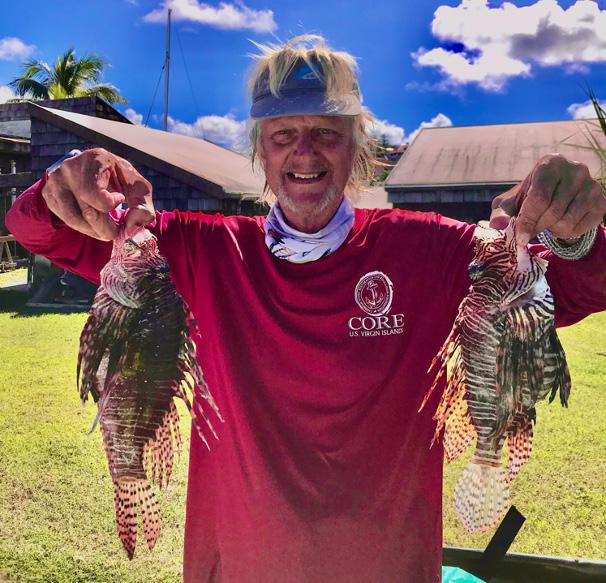
Nikole Greaux was born in St. Thomas, U.S. Virgin Islands, and grew up on an island in the middle of the Charlotte Amalie Harbor. She learned to fish for fun, and for food at an early age. Nicole and her husband come from a family of fishers. She is currently the CFMC Fisheries Liaison for St. Thomas and St. John, and a fervent advocate of sustainable seafood practices in the U.S. Virgin Islands.

27
Mike Funk
Nikole Greaux
Recipes
The objective of this cookbook is that consumers of fish and seafood enjoy underutilized species that are not usually consumed in restaurants and home kitchens. These species are abundant in the daily catches, are easy to cook and exquisite to taste. In this chapter you will find recipes for the species described in Chapter 2. They can be found in fish markets in Puerto Rico and the U.S. Virgin Islands.

28
Is that fish edible? Chapter 5
Cooking Method Chart Juan C. Vicéns
Lionfish (Pterois volitans)

Lionfish Ceviche - Michael Funk
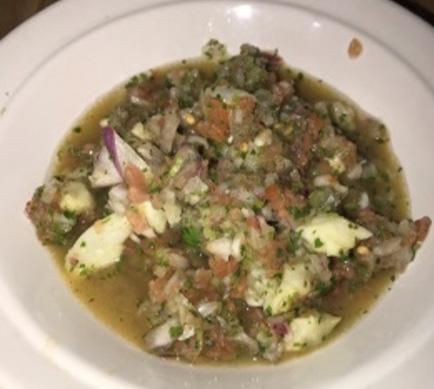
(4 portions)
1. Dice the lionfish into about ½ inch cubes.
2. Dice the onion, tomatoes, cilantro and pepper (use ½ the pepper if you want it to be less spicy) as fine as you can (or use a food processor).

3. Place these prepared ingredients into a large bowl.
4. Add the juice from the limes, orange and lemon (there should be enough juice to cover the other ingredients) and stir the mixture well.
4 ea – 6 oz / 170 g lionfish fillets
1 ea red onion

2 ea red tomatoes
1 ea bunch of cilantro

4 ea limes

1 ea orange
1 ea lemon
1 ea jalapeno pepper
Salt and pepper to taste
5. Cover the bowl and put in the refrigerator for an hour or so before serving with your preferred scoops (can be served as corn scoops, but you can also serve it as a kind of cold soup).
29
Food name: Lionfish ceviche Michael Funk
Lionfish Soup - Michael Funk
(4 portions)

1 tbsp / 6 g smoked paprika
1 tbsp / 15 g minced garlic
1 tsp / 6 g each allspice, thyme, clove, nutmeg, basil, cinnamon
12 oz / 340 g egg noodles
1. Remove the lionfish fins, spines and head (everything from the abdomen forward). Remove the skin.
2. Put the fish in a large pot with 4 quarts of water. Bring the water to a boil.
6-8 ea small lionfish

2-3 ea carrots
1 ea white onion

2 cups / 453 g your favorite green vegetable (okra, collard greens, etc.)

1 ea green banana

Juice of 2 limes
Salt to taste
1 tbsp / 6 g black pepper
3. While the fish are heating up cut the carrots, vegetable, and banana into thin slices and then coarsely dice the onion.
4. When the water has boiled and the fish is cooked, remove the fish and add the carrots, onion, lime juice, garlic and spices.
5. Pick the meat off the fish being careful to remove all the bones.
6. Add the meat and noodles to the pot and let it boil until the carrots, onion and noodles are soft. Serve hot.

30
Food name: Lionfish soup
Lionfish (Pterois volitans)
Lionfish Tacos - Wanda Pantojas
(4 portions)
8 ea flour tortillas (medium size)
1 ea bunch romaine lettuce

1 cup / 70 g green cabbage, sliced
½ cup / 50 g red onion, sliced
1 tbsp / 6 g poppy seeds, toasted
2 tbsp / 30 g cilantro mayonnaise
1. Cut the fish filets into strips, approximately 3 inches.
2. Season the fish strips with salt, pepper, garlic and lemon juice.
3. Bread the fish with the standard procedure (flour, egg wash and breadcrumbs or cornmeal).
4 ea fillets of Lionfish

Salt and pepper to taste
2 ea garlic cloves

1 tbsp / 15 ml lemon juice
1½ cup / 187.5g flour
2 ea eggs beaten (egg wash)
2 cup / 240 g cornmeal
1 cup / 200 ml vegetable oil

4. Fry at medium heat until golden brown color. Drain over paper towel.
5. Warm up the tortillas at the grill or griddle.
6. Serve each tortilla with 2 pieces of fish strips, Romano lettuce, red cabbage, and red onion.
7. Sprinkle poppy seeds on top of each tortilla and finish with cilantro mayonnaise.
 Lionfish (Pterois volitans)
Lionfish (Pterois volitans)
31
Food name: Lionfish tacos
Vanilla-Butter Poached Lionfish with Pumpkin Puree and Local Kale - Cory Magras

(4 portions)
8 ea lionfish fillets (cleaned, skinned and deboned)

1 ea vanilla bean (cut and scraped)
1 ea small onion (julienne)


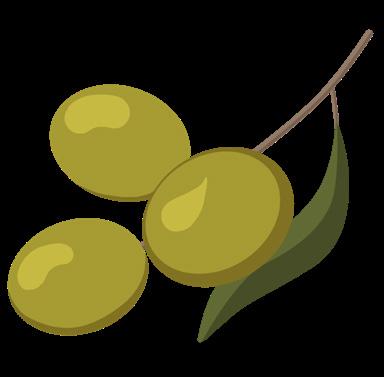
1 lb / 454 g unsalted butter

Pinch salt
1. In a heavy bottom small saucepot, melt a pound of butter at a low medium heat. Add thinly julienned onion, a pinch of salt and scrapped vanilla bean. Once
butter melts, place the lionfish fillets in and cover with the onions. Let lightly simmer for 3 - 5 minutes on each side or until fully cooked.
2. Gently remove each fillet from the pot, and place 2 fillets per serving on the plates. Increase the heat to high and sauté the onions for 1-2 minutes. Remove the vanilla bean pods and spoon the onion and vanilla bean mixture over the fillets.
A great accompaniment are:

Pumpkin Puree
2 lb / .9 k pumpkin cleaned and large dice
1 gal / 3.70 lt water
1 tbsp / 18 g salt
4 oz / 113 g butter
1. Boil the pumpkin in salted water until tender. Strain and reserve some of the water.
2. In a blender, puree the cooked pumpkin with the butter. Slowly add some of the water until the desired consistency.
continue
Lionfish (Pterois volitans)
32
Food name: Vanilla butter poached lionfish with pumkin puree and local kale
Local Kale
1ea bunch of kale, cleaned and chopped
4 ea garlic cloves, shaved
2 fl oz / 59 ml olive oil

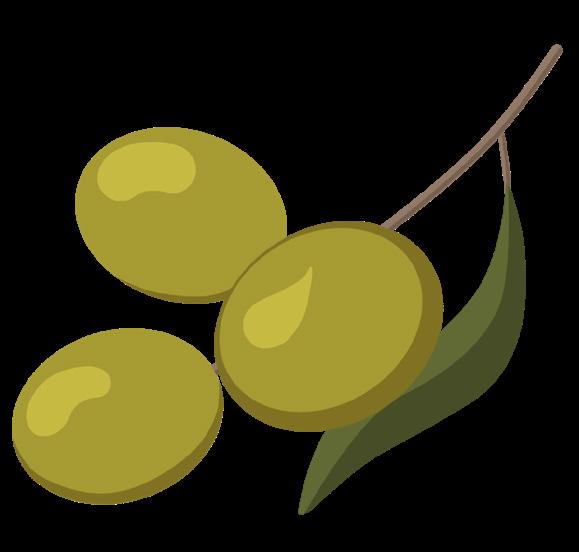
1 tsp / 6 g salt
1 tsp / 2 g black pepper, ground
1. Heat the oil in a large sauté pan. Add the garlic for a second and then the kale, season, sauté very briefly and remove from the heat. Serve.
33
Wahoo (Acanthocybium solandri)

Nori Wrapped Wahoo with Local Cucumber Salad and Surinam

Cherry Gastrique - Cory Magras (4 portions)
1. Wrap each piece of wahoo with half of the nori sheet. To wrap, gently moisten the nori with only your wet fingers, and wrap around the fillet of wahoo.
2. Coat a heavy cast iron skillet with the canola oil. Gently place the wahoo in the skillet and sear on each side for 1 minute each. Remove from the skillet and reserve.
3. Shave the cucumbers thinly, and finely julienne the red pepper. Mix in a bowl with the remaining ingredients.

4. Slice the wahoo into 2 pieces and present on top of the salad. Use the remaining dressing from the salad for the fish. Drizzle the cherry gastrique around the plate.
2 lb / 907 g fillet of local wahoo (cleaned and cut into 4 even 8 ounce portions)
4 ea sheets of seaweed nori.
1 tbsp / 15 ml canola oil

2 ea. local cucumber
½ tsp / 2.5 ml seasoned rice wine vinegar
1 ea red bell pepper
½ tbsp / 7.5 ml extra virgin olive oil

1 tsp / 5 ml sesame oil
½ t sp / 1 g red pepper flakes
½ tsp / 3 g salt
Surinam Cherry Gastrique
4 oz / 113 g Surinam cherries
1 tbsp / 18 g sugar
1 tsp / 5 ml honey
2 fl oz / 59 ml white vinegar
Pinch of salt
4 fl oz / 118 ml water
1. Simmer until thick, strain and serve.
34
Food name: Nori wrapped wahoo with local cucumber salad and Surinam cherry gastrique
Wahoo and Blackfin Tuna Carpaccio - Cedric Taquín
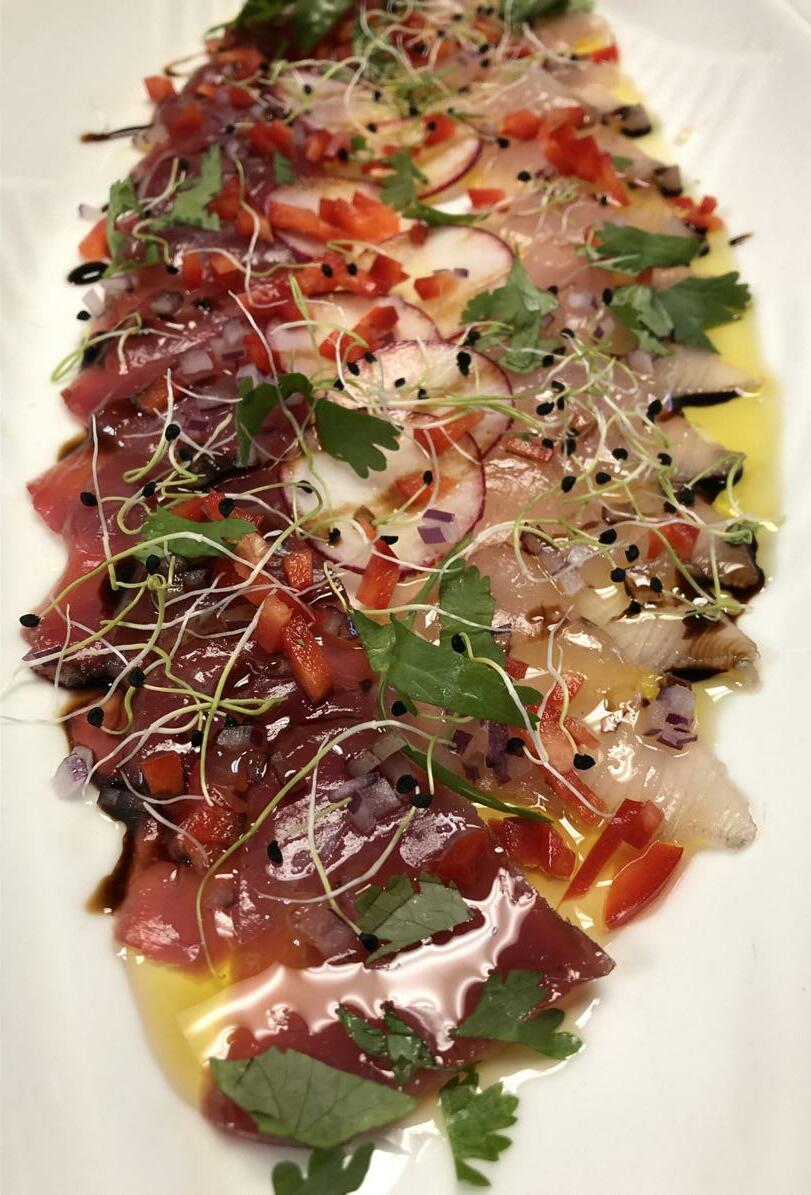
(4 portions)
4 oz / 113 g thinly sliced wahoo
4 oz / 113 g thinly slices black fin tuna

2 oz / 57 g minced red onion
2 oz / 57 g minced bell pepper
1 tsp / 2 g black sesame seeds
1 tbsp / 15 ml toasted sesame oil
2 tbsp / 12 g chopped cilantro
Sliced radishes


4 fl oz / 120 ml extra virgin olive oil
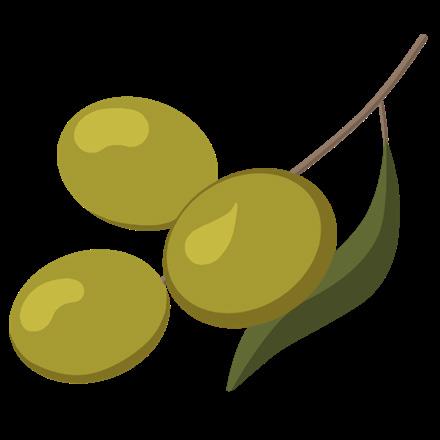
Kosher salt, black pepper
Onion sprouts
Aged Balsamic vinegar
Lime wedges for garnishing
1. Chill a large plate.
2. Cut the fish as thin as possible and fan-out on the chilled plate.
3. Top with all the vegetables and garnishes.
4. Add extra virgin olive oil gently to bath the slices. Finish with cilantro, sesame oil, sesames, radishes, sprouts and balsamic drizzle.
 Wahoo (Acanthocybium solandri)
Wahoo (Acanthocybium solandri)
35
Food name: Wahoo and back fin tuna
White Grunt with Nutty Crust - Juan C. Vicéns (4 portions)


8 oz / 227 g finely chopped nuts (pecans, walnut, pistachios or almonds)
8 oz / 227 g all-purpose flour seasoned with ½ tsp salt

8 oz / 237 ml milk
4 oz / 119 ml vegetable oil for fan frying
1. Season the fish fillets with salt, pepper and lime juice.
2. Mix breadcrumbs, herbs, spices and nuts in a bowl.
3. Pour milk in second bowl and seasoned flour in a third bowl.
1½ lb / 680 g white grunt fillets skin and boneless (cut in 6oz /170g portions)


Salt and pepper (optional) to taste
Juice of 1 ea criollo lime
8 oz / 227 g breadcrumbs
½ oz / 14g fresh parsley, chopped
½ oz / 14 g fresh chives, finely sliced
½ oz / 14 g garlic powder
¼ oz / 7 g mustard powder
4. Use a heavy bottom pan to the heat oil

5. Toss each piece of fish first in the flour, then in the milk and third in the nut crumb mixture.
6. Carefully sear the fillets for about 3 – 4 minutes on each side, until golden brown.
7. Serve with Apio root pure and Pineapple herb gastrique.

continue Food name: White grunt with nutty crust 36
White grunt (Haemulon plumierii)
Apio Root Pure
1½ lb / 680 g Caribbean celery root “Apio” peeled and diced
1 gal / 3.8 lt water with salt
6 ea garlic cloves whole and peeled
1 oz / 28 g piece of ginger peeled
6 oz / 177 ml heavy cream
4 oz / 119 ml whole milk
4 oz. / 113 g butter
Pinch freshly grated nutmeg
Salt to taste
1. Boil the apio in salted water until tender, strain reserve some of the cooking liquid.
2. Mix garlic, ginger, cream, milk and butter in a saucepan, simmer for 15 minutes, strain and reserve. Grate some nutmeg on top. Reserve.
3. Mash the apio using a mixer with the paddle attachment, add some of the simmered mixture while it works, and keep adding in batches until finished. It should be soft, but with body. If necessary, add a little of the cooking liquid to adjust consistency. Try and adjust seasoning. Serve.
Pineapple Herb Gastrique
4 oz / 113 g sugar
2 oz / 59 ml rice wine vinegar
8 oz / 227 g small-diced ripe fresh pineapple
1 oz / 30 ml lemon juice
1 oz / 28 g fresh peppermint chopped
1 oz / 28 g cilantro chopped
1 oz / 28 g chives finely sliced
½ oz / 14 g culantro finely sliced
1. Mix sugar and vinegar in a small saucepan, cook on medium hi heat for 4 minutes or until slightly syrupy.
2. Add the diced pineapple and cook for four more minutes.
3. Turn off heat and cool.
4. When cooled add lemon juice and herbs (reserve some for garnish) and season with a little salt. Serve.
Final Presentation
1. Spoon de pure on half of center of the plate.
2. Serve fish on top.
3. Drizzle the pineapple herb gastrique over the fish and reserved chopped herbs.
37
Pigeon Peas Stew with Turmeric and White Grunt Fish Fillets - Wanda Pantojas (4 portions)
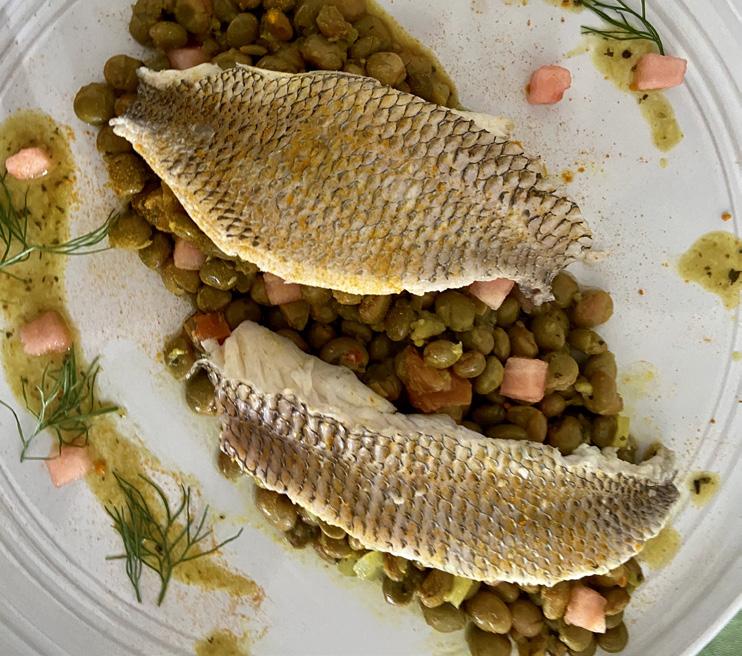
1 lb / 454 g pigeon peas
1 tbsp / 15 g turmeric
1 tsp / 10 g cumin
1 ea laurel leaf
2 tsp / 8 g salt
Method:
1. Season each White grunt fillets with lemon juice, salt and pepper and 1 oz (30 ml) of olive oil.
2. Heat a medium deep pan, sweat the fillets, add fish broth, cover and cook for 8 minutes. Keep aside.
4 ea grunt fillets
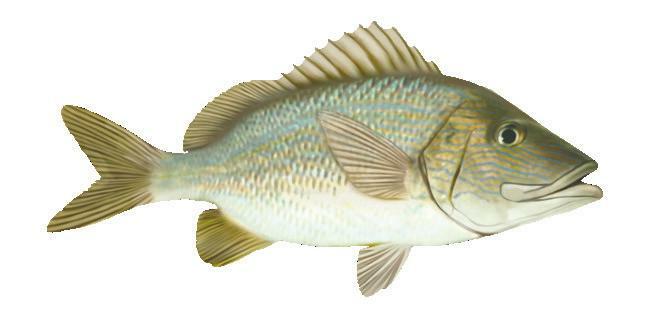
2 tbsp / 30 ml lemon juice

Salt and pepper to taste
6 oz / 180 ml olive oil
16 oz / 568 ml fish broth
½ cup / 90 g local seasoning (sofrito)

½ ea onion, diced


1 cup /180 g tomatoes, chopped
3. In a separate pan add 2 ounces of olive oil (60 ml), sauté the local seasoning (sofrito), onion and chopped tomatoes approximately 3 minutes.
4. Stir in the pigeon peas, turmeric, cumin, laurel leaf and salt, cook few minutes.
5. Serve the White Grunt fillets on a bed of warm pigeon peas stew.
6. Serve with fried ripe plantain or fried breadfruit (tostones).
White grunt (Haemulon plumierii)
38
Food name: Pigeon peas stew with turmeric and white grunt fish fillets
White Grunt Fish Balls - Nicole Greaux (4

portions)
3 lb / 1.36 kg grunt, scaled and cleaned
3 ea garlic cloves

1½ tsp / 6 g all-purpose seasoning

½ tsp / 1 g smoked paprika
10 oz / 283 g panko
1. Fry grunt in hot cooking oil, about 4 minutes on each side.
2. Put aside to drain off
excess oil and blot with paper towel.
3. Flake fish meat off all grunts into bowl (no bones).
4. Add garlic, all-purpose seasoning, and smoked paprika. Mix well, let sit for 10 minutes. Make into balls of desired size.
6. Heat cooking oil to hot.
7. Place panko in soup bowl or a tray and coat fish balls thoroughly.
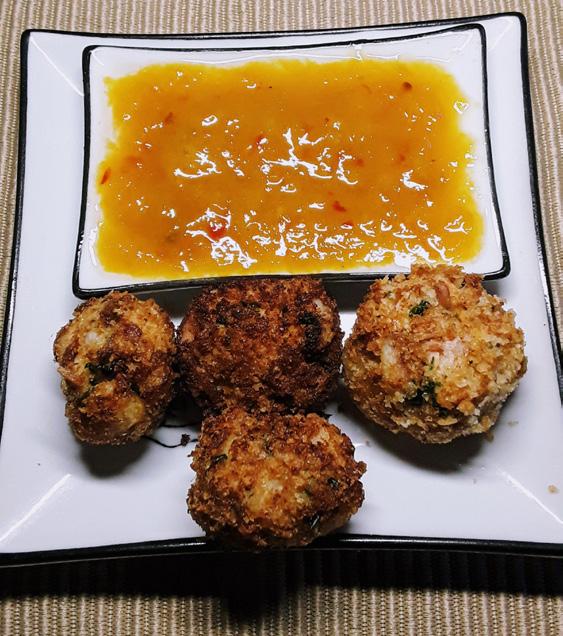
8. Place coated fish balls gently into oil and fry to golden brown. Eat with dipping sauce of your choice Spicy mango chutney is mine.
Spicy mango chutney
1 lb / 453 g mango semi-ripe, grated
4 oz / 113 g white sugar
4 oz / 113 g dark brown sugar
2 tbsp / 30 ml water
2 oz / 57 g ginger, grated
2 ea garlic cloves minced
2 ea red chilies fresh, sliced

1 tbsp / 6 g red chili flakes hot or sweet
3ea cinnamon stick
1 ea star anise
2 ea cardamom pods
3 ea cloves
2 tbsp / 30 ml white vinegar
¼ tsp /1.25 g salt
1. Combine all ingredient in a saucepan and cook on medium-low for 25 to 30 minutes.
2. The sugar will melt and become thick and syrupy at first, then the mixture will reduce to almost half.
3. Remove from heat and remove the whole spices. Let cool in the pan for 10 minutes and store in jars. Refrigerate until use.
Food
39
White grunt (Haemulon plumierii)
name: Grunt fish balls
Fresh Herb Roasted Mahi-Mahi and Fruit Salsa - Cory Magras
(4 portions)
Dolphinfish/mahi-mahi
4 ea 7 oz / 198 g portions of fresh mahi-mahi
(Typically bull mahi-mahi are larger with better portions, chicken mahimahi are smaller with very thin portions)

½ ea bunch scallions (root ends trimmed off)
4 ea sprigs thyme (stems removed)
1 fl oz / 30 ml white vinegar
1 ea garlic clove (crushed)

1 fl oz / 30 ml olive oil
1 tsp / 2 g pepper flakes
1 tbsp / 15 ml honey
1 tsp / 6 g sugar
1 tbsp / 18 g salt
1. In a blender, place the scallions, thyme, garlic, pepper, salt, sugar, and white vinegar. Blend until smooth. Slowly add the olive oil to form an emulsion.
2. Pour over the mahi-mahi portions and let it marinate for at least 1 hour.
3. In a 450 ºF / 232 ºC oven, place the mahi-mahi portions on a lined roasted pan, with marinade covering the fish. Roast for 10 to 15 minutes or until the fish is firm to the touch. Serve with fruit salsa.

Fruit Salsa
½ ea green bell pepper (diced)

½ ea ripe mango medium size (peeled and diced)
½ ea ripe papaya small size (peeled, seeded and diced)
½ ea red onion small size (diced)

½ ea lemon (juice)
1 fl oz / 30 ml olive oil
Salt and Pepper
1. Combine all ingredients in a mixing bowl and refrigerate.
2. Spoon cold salsa over the roasted fish at the time of serving.
40
Food name: Fresh Herb Roasted Mahi Mahi and Fruit Salsa
(Coryphaena hippurus)
Air Fry Mahi with Mabí Soy Glaze - Juan C. Vicéns

(4 portions)
1. In a bowl, mix well all the marinade ingredients.
2. In another bowl, put the fish fillets and pour 1/3 of the marinade. Cover and let rest for 30-45 minutes.
3. In a small saucepan reduce the saved marinade until thick and set aside.
4. Place fish fillets separated on the air fryer tray.
5. Cook the fish at 380 ºF for 6 minutes.
6. Brush fillets with thickened sauce and cook at 400 ºF for 4 minutes.
7. Brush with additional sauce and served with taro puree.
4 ea – 6 oz / 170 g mahi-mahi fillets portions

Marinade
8 oz / 237 ml mabí bark refreshment (can substitute with apple cider)
2 oz / 60 ml rice wine vinegar
4 oz / 120 ml soy sauce

.5 oz / 15 g fresh ginger, grated
1 oz / 28 g garlic, minced
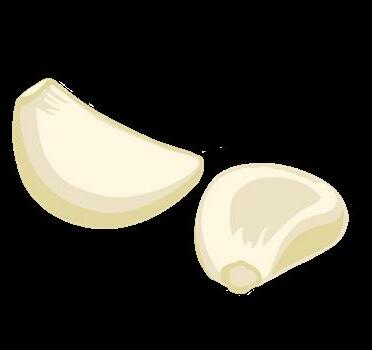
1 oz / 30 ml lime or lemon juice

2 ea cilantro (recao) leaves, chopped
2 oz / 60 ml honey
Taro Puree
1.5 lb / 680 g taro root peeled
1 qt / .94 lt water salted
1 oz / 30 ml extra virgin olive oil
2 oz / 57 g butter
2 oz / 60 ml heavy cream
Pinch nutmeg

Salt to taste
1. Cook the taro in boiling salted water until tender.
2. Drain the taro into a bowl.
3. Mash while adding the rest of the ingredients (can use the mixer with the paddle attachment).
4. Keep warm hot until served.
41
Food name: Air fry Mahi with mabà soy glaze
Dolphinfish/mahi-mahi (Coryphaena hippurus)
Kingfish

Kingfish Stew in Curry - Wanda Pantojas

(4 portions)
½ cup / 50 g red bell peppers, medium diced

1 tbsp / 15 ml vinegar
¼ cup / 25 g cilantro

Method:
1. Season the fish with salt, pepper and lemon juice.
2. Bread the fish lightly, shake off.
3. Heat the fish in a saucepan for 3 minutes each side. Set aside.
4. Using the pan, add the coconut milk and curry powder. Cook on medium heat. Season with salt and pepper.
8 ea slices of kingfish
Juice of 2 ea lemons
½ cup / 100 ml olive oil
1 cup / 120 g flour
2 tbsp / 30 ml olive oil
8 oz / 233 ml coconut milk
1 tbsp / 9 g curry powder
Salt and pepper to taste
1 cup / 211 g tomatoes, diced
5. Stir in the fish fillets, tomatoes, red bell peppers and vinegar. Cook for 3 more minutes to concentrate the flavors.
6. Cook until the sauce thickens. Cover the fillets with sauce and finish with cilantrillo.
7. Adjust the taste with salt and pepper.
42
Food name: King fish stew in curry
(Scomberomorus caballa)
Kingfish Medallions with Garlic-Cream Sauce - Cedric Taquín

(4 portions)

Procedure:
1. Season fish medallions and set aside.
2. Warm a non-stick pan. Add oil for sautéing.
3. Sautee fish on medium heat and flip after a few minutes, remove when golden on both sides and done- time will vary on thickness of medallions.
4. While the pan is still hot, add a little oil if necessary, add the minced garlic, sweat, do not burn nor brown, deglaze with white wine as soon as the garlic sweats, flame the wine to remove excess alcohol, swirl and reduce on low heat until almost dry.

4 – 8 oz. / 4 – 227 g Kingfish medallions.

Salt and pepper to taste
3 tbsp / 45 g fresh, minced garlic
2 fl oz / 60 ml white wine
4 fl oz / 120 ml heavy cream
3 tbsp / 45 g fresh grated parmesan cheese
3t bsp / 18 g chopped parsley
Veg. Oil for sautéing.

5. Add heavy cream, reduce on low heat by half, add parmesan, continue to warm on low heat and stir until sauce thickens. Finish with parsley.
6. Taste and adjust seasoning, be gentle with the salt, normally the parmesan cheese is salty enough for this preparation.
Kingfish (Scomberomorus caballa)
43
Food name: King Fish medallions with garlic-cream sauce
Mojito Infused Porgy Fish Fingers / Fried Yams and Guava Pique Sauce

- Juan C. Vicéns
(4 portions)
1. Season the fish with mint, lime zest, spices and salt to taste.
2. In a bowl, add flour, cornstarch and season to taste.
3. Dredge the fish in the flour mix, pat excess and fry in hot oil until golden.
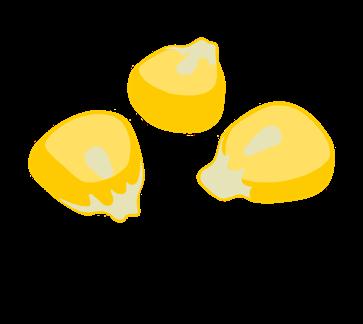

4. Remove to paper towel lined plate.
5. Serve hot with fried yams and guava pique sauce.
Guava Pique Sauce

8 oz / 227 g guava paste
1.5 oz / 90 ml red wine vinegar

6 oz / 177 ml water
12 ea porgy filets about 2 oz / 57 g each, cleaned, deboned, skin on
1 tbsp / 6 g fresh peppermint, chopped
1 tbsp / 6 g lime zest
1 tbsp / 6 g garlic powder
Pinch of cumin
Salt to taste
8 oz /227 g all-purpose flour
2 oz / 57 g cornstarch
Oil for frying
.5 oz / 14 g garlic chopped
.5 oz / 15 ml shiracha or any other hot sauce
1. Simmer all the ingredients stirring occasionally until melted and well mixed.
44
Food name: Mojito infused pluma fish fingers/fried yams and guava pique sauce
Porgy (Calamus pennatula)
Whole Pluma (Porgy) Deep in Batter with Ripe Plantain Chutney - Wanda Pantojas
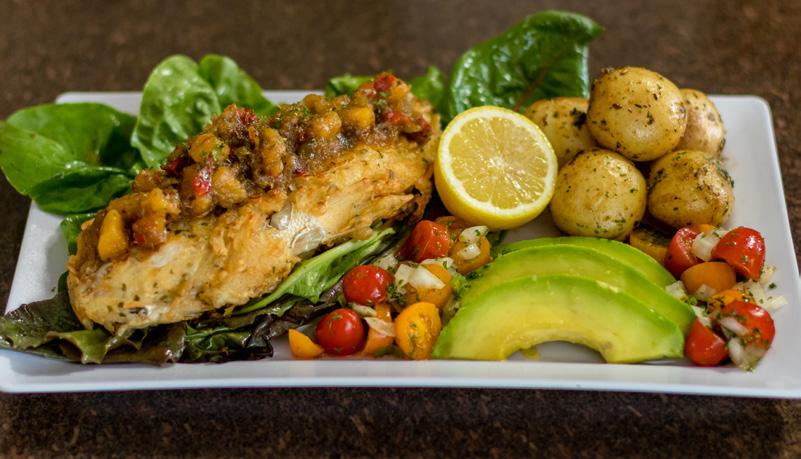
(4 portions)
Chutney
1 ea ripe plantain, medium diced
2 tbsp / 27 g olive oil
4 ea sweet scotch bonnet peppers
2 ea garlic cloves, mashed
1 tbsp / 10 g fresh ginger
8 oz / 250 g brown sugar
8 oz / 250 ml apple cider vinegar

½ cup / 200 ml water
4 ea whole plumas cleaned
Salt and pepper to taste
1 ea prepared mix to make bacalaítos (stamp and go)
1 cup / 400 ml olive oil
Method:
1. Season the fish with salt and pepper.
2. Prepared the bacalaítos mix, (stamp and go) follow the instructions.
3. Dip the whole fish into the batter, fry for 5 minutes at medium heat
4. Serve the fish with chutney sauce on top.

2 tsp / 18 g cinnamon
½ tsp / 4 g salt
1 oz / 30 ml lemon juice

Red pepper flakes (optional)
Method:
1. Cut the plantain in cubes, sauté in olive oil but do not cook full.


2. Combine the plantain, peppers, garlic, sugar, vinegar in a heavy saucepan. Cook until the sugar dissolves.
3. Stir in water, ginger, cinnamon, salt, lemon juice and pepper flakes.
4. Adjust seasonings with vinegar or sugar. Cook until thicken.
5. Remove from the heat and cool uncovered.
Porgy (Calamus pennatula)
45
Food name: Whole Porgy deep in batter with ripe plantain chutney
Porgy with Pigeon Peas and Coconut Milk - Nicole Greaux

(4 portions)
2 ea large porgy cleaned, scaled and fin clipped. Head attached optional, scored twice on each side.
Seasoning
3 tbsp / 18 g fresh oregano, minced
3 tbsp / 18 g fresh thyme leaves
5 ea large garlic cloves, minced (or put through garlic press)

4-6 large leaves of culantro (shado beni) finely chopped

½ tsp / 3 g salt
1. Pound all ingredients together in mortar/or use food processor.
2. Rub paste on both sides of fish making sure to get some in the cuts. Put seasoned fish aside.
Cooking
1 ea small onion, sliced in rounds

8 oz / 227 g pigeon peas, cooked
4 oz / 118 ml coconut milk
2 oz / 59 ml water
3 tbsp / 45 g butter
1 ea whole hot pepper (scotch bonnet, local) or 2ea seasoning peppers.
1. In a pot large enough to hold both fish laying flat (sauté pan is what I use) put 4 tbsp of butter on low heat.
2. Make a layer of onions rounds over the melted butter on bottom of pan.
3. When butter starts to bubble, lay fish in pan, side-by-side. Turn heat up to medium, cook fish for 5 minutes and then flip over.
6. Carefully add whole scotch bonnet pepper or seasoned pepper between the fish filets, add pigeon peas and cook covered for 5 minutes.
7. Add water and coconut milk. Cover and lower heat, once again bring to a simmer 8 minutes.
8. Uncover pan gently flip fish over.
9. Turn up heat to medium for 3 minutes and then turn off heat. Very carefully remove hot pepper and serve with side of your choice.
 Porgy (Calamus pennatula)
Porgy (Calamus pennatula)
46
Food name: Porgy with pigeons peas and coconut milk
Queen
Cajun Triggerfish with Dijon Potato Salad and Zesty Cabbage Slaw - Cory Magras (4 portions)

2 ea whole triggerfish (cleaned, filleted and deboned)

4 fl oz / 118 ml buttermilk
1 tsp / 2 g Old Bay Seasoning
½ tsp / 1 g garlic powder

½ tsp / 3 g salt
Pinch cayenne pepper

4 oz / 113 g all-purpose flour
2 oz / 57 g cornstarch
16 fl oz / 473 ml canola oil

1. Combine seasonings and buttermilk in a bowl and reserve. Place the 4 fillets of trigger fish in the buttermilk mixture to cover the fillets and refrigerate overnight.
2. Place the oil in a heavy bottom pot and heat on a high heat to 350º F / 177º C.
3. Mix the flour and corn starch. Coat the fillets with the flour mixture to absorb the buttermilk and place in the hot oil for 4 minutes on each side or until golden brown.
Dijon Potato Salad
6 ea large red bliss potatoes (oil, salt and pepper) roasted until soft.
3 ea local seasoned peppers (roasted and chopped)
1 tbsp / 15 ml Dijon mustard
4 tbsp / 60 ml mayonnaise
1 tbsp scallions (chopped)
1 tsp / 2 g black pepper
1. Combine all ingredients GENTLY!
Zesty Cabbage Slaw
½ head of purple cabbage (shaved thin)
1 ea bulb of fennel (shaved thin)
2 tbsp / 36 g sugar

2 fl oz / 57 ml white balsamic vinegar
2 fl oz / 57 ml extra virgin olive oil
1 tsp / 6 g salt
1 tsp / 2 g black pepper
1 tsp / 2 g fennel pollen
1. Combine all ingredients GENTLY!
47
Food name: Cajun triggerfish with dijon potato salad and zesty cabbage slaw
triggerfish (Balistes vetula)
Grey Triggerfish Criollo Stew for Arepas - Cedric Taquín
(4 portions)
Procedure:
1. Make sure fish does not have any pin-bones, cut in small rough pieces.

2. In a large saucepan, warm olive oil. Add onions, peppers, garlic, sofrito, olives, achiote and sweat on medium heat until tender. Add white wine and deglaze pan, reduce a few minutes to dry. Add tomato sauce, and mix well, lower heat.
2 lb / 907 g fresh triggerfish fillets (cleaned and carefully deboned)
2 garlic cloves
4 oz / 120 g sofrito (recipe below)
4 fl oz / 120 ml Spanish style tomato sauce
Salt and pepper to taste
3 oz / 85 g julienne onion
3 oz / 85 g julienne red pepper
2 oz / 57 g fresh chopped cilantro
3 tbsp /45 g minced Spanish olives
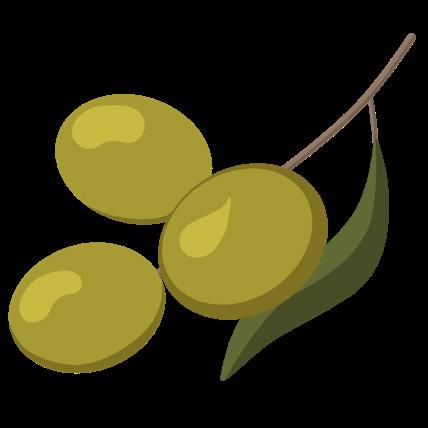
Extra virgin olive oil
4fl oz / 120ml white wine
1 tsp annatto paste or powder.
3. Cook gently for about 5 minutes watching it doesn’t stick or burn to the pan. Add a little water or more wine if necessary. Consistency must be moist to add the fish and continue cooking.
4. Add fish to the prepared criollo sauce, cook on low heat, mixing and shredding fish as it cooks. When the fish is cooked and shredded, finish with cilantro and a splash of more extra virgin olive oil. Adjust seasoning.
5. Serve Criollo fish stew with Arepas.

Note – Filling is also good to stuff empanadillas and alcapurritas.
Sofrito
6 oz / 170 g onion
4 oz / 113 g cubanelle peppers
2 oz / 57 g garlic cloves
2 oz / 57 g sweet chili peppers (ají dulce)
2 oz / 57 g cilantro
2 oz / 57 g cilantro (recao)
In a food processor, work it until finely chopped.
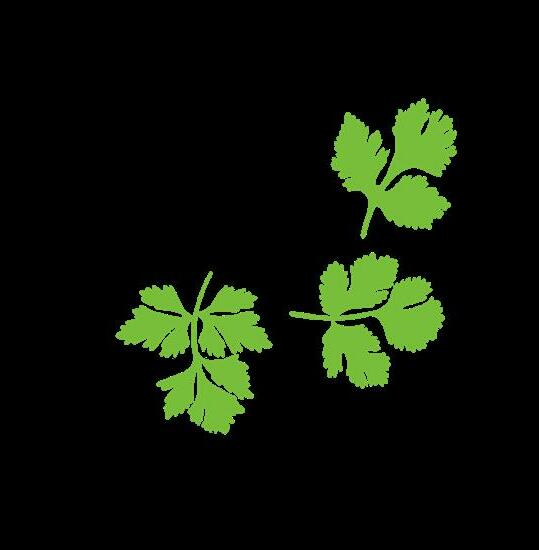
48
Queen triggerfish (Balistes vetula)
Fried Parrotfish with Crucian Vinegar Sauce - Carlos Farchette

(4 portions)
Redtail parrotfish (Sparisoma chrysopterum)

4 – 8oz / 227 g filets of parrotfish
Salt and pepper to taste
Oil for frying 350º F / 177º C
1. Season to taste.
2. Fry the fillets in hot oil, around 3 minutes on each side or until cooked.
3. Dredge on paper towel to eliminate excess oil and serve hot with Crucian vinegar sauce.
Crucian Vinegar Sauce (4 portions)
2 tbsp / 30 ml olive oil
1 ea medium size onion

1 ea celery stalk
2 ea parsley sprigs
4 ea Puerto Rican sweet peppers
3e a cloves garlic

½ ea green and red bell pepper

Salt and pepper to taste
¼ tsp / .5 g thyme leaves
¼ tsp / .5 g oregano leaves
1 ea sliver scotch bonnet pepper or other hot pepper
1 tbsp / 15 ml white vinegar
4 oz / 118 ml tomato sauce or 2 oz / 59 ml tomato paste
1. Chop onion, garlic, celery, parsley, sweet and hot pepper, red and green bell peppers, thyme and oregano.
2. Sauté in olive oil. Add tomato sauce or tomato paste. Cook slowly for about 5 minutes.
3. Add vinegar reduce heat and simmer for 2-3 minutes. Pour mixture over fried fish.
A traditional accompaniment is white or seasoned rice.
49
Food name: Fried parrotfish with crucian vinegar sauce
Blackfin Tuna in Citrus Escabeche - Juan C. Vicéns

(4 portions)
6 oz / 177 ml olive oil

2 oz / 57 g sliced garlic cloves
4 ea sweet chili chopped
4 oz / 113 g red bell pepper in julienne
4 oz / 113 g orange bell pepper in julienne
4 oz / 113 g green bell pepper in julienne

4 oz / 113 g yellow bell pepper in julienne
4 oz / 113 g white onion in julienne
10 ea stuffed Spanish olives sliced
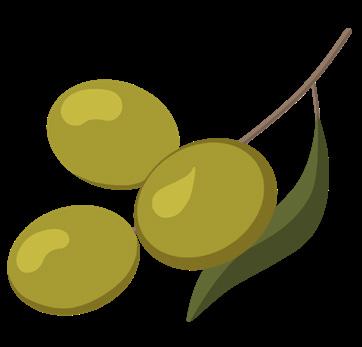
2 ea bay leaves
2 oz / 59 ml cider vinegar
2 oz / 59 ml local limejuice
6 oz / 177 ml freshly squeezed orange juice
Salt and black pepper (optional) to taste
1 oz / 28 g cilantro chopped
1 oz / 28 g culantro chopped
2 tbsp citrus zest
2 lb / .9 k black fin tuna cleaned, skinned and with the blood line removed

Cut in medallions 1½” / 3.8cm thick

1. On medium hi, heat sauté garlic, assorted peppers and onions. Cooked until translucent.
2. Add olives, bay leaves, vinegar and citrus juices.
3. Season with salt and (optional) black pepper
4. Simmer for 10 minutes.
5. Remove pot from the stove. Add herbs and citrus zests.
6. In a hot sauté pan with very little oil, sear the filets about 1 minute on each side.
7. Serve filets on a deep platter and cover with the escabeche mixture.
8. Can be served immediately or let marinate overnight.
Food
50
name: Black fin tuna in citrus Escabeche
Blackfin tuna (Thunnus atlanticus)
Coriander Crusted Blackfin Tuna with Culantro Chimichurri, Okra Fungi and Candied Sweet Chili Peppers - Cory Magras (4 portions)

1 tsp / 2 g pink peppercorns (toasted)
1. Place all spices in spice grinder and work until ground.
2. Lightly coat the tuna loin with the spice mix and gently sear on each side. Once seared, place on a cutting board and gently slice with a sharp knife into four portions.

3. Serve over okra fungi, sparingly spoon the chimichurri over the fish and top with candied local peppers.

Chimichurri
5 ea culantro leaves
5 ea parsley sprigs
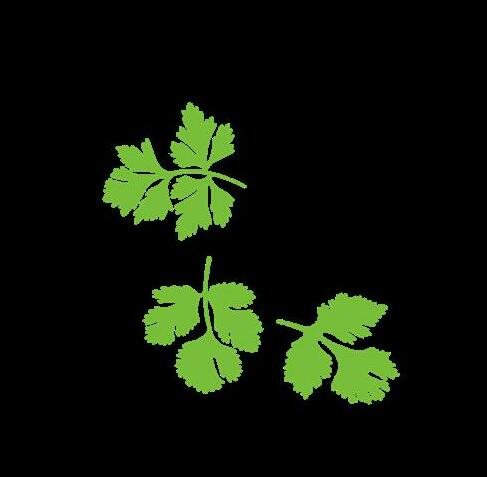
4 ea cilantro sprigs
Juice from one lemon
2 lb / 907 g of cleaned loin of Blackfin tuna (no skin, no bloodline)

1 tbsp / 6 g coriander powder (toasted)
1 tsp / 2 g cumin powder (toasted)
1 tsp / 2 g fennel seeds (toasted)
1 tsp / 6 g salt
2 fl oz / 60 ml white vinegar
4 fl oz / 118 ml extra virgin olive oil
Salt and pepper to taste
1. Blend until smooth, and then slowly add extra virgin olive oil. Serve.
continue
Blackfin tuna (Thunnus atlanticus)
51
Food name: Coriander crusted black fin tuna
Okra Fungi
16 fl oz / 473 ml milk
4 ea fresh okra (sliced thin)
2 tbsp / 30 g butter
1 tbsp / 18 g salt
1 tsp / 2 g white pepper
4 oz / 113 g corn meal
1. Bring the milk to a simmer with okra, butter salt and pepper. Slowly add the corn meal while stirring briskly. On a low heat, simmer until thick and not gritty.
2. Pour into a small pan to cool, and cut in a desired shape.


Candied Local Seasoned Pepper
3 ea sweet chili pepper, ají dulce, finely julienne
1 tbsp / 15 ml white balsamic vinegar
1 tbsp / 18 g sugar
2 fl oz / 60 ml water
Pinch of salt.
1. Simmer until liquid is thick.
52
Seared Tamarind Blackfin Tuna - Cedric Taquín
(4 portions)
Tamarind Glaze:
2 tbsp / 30 ml soy sauce
4 oz / 118 ml water
4 tsp / 20 ml tamarind pulp or tamarind concentrate
1minced garlic clove

1 tbsp / 15 g minced ginger
1 tsp / 6 g brown sugar or honey
Pinch salt
Minced chili pepper for heat, optional
B1 tbsp / 18 g chopped cilantro.

Procedure:
1. Combine all ingredients; simmer on low heat until thick, around 20-25 minutes stirring constantly. Strain sauce if desired.
Procedure:
4 - 6-8 oz / 170 – 227 g portions of black fin tuna loin


Soy sauce
2 oz / 57 g sesame seeds
Salt and pepper
1. Splash tuna loins with soy sauce, add pepper and sesame seeds.
2. Heat nonstick pan until almost smoking hot. Sear tuna on each side, around a minute per side depending on thickness and desired doneness.
3. Add tamarind sauce to loins and swirl a few minutes on hot pan without caramelizing, just enough to thicken the sauce a little bit and make it stick to fillet. Finish with sesame seeds and cilantro.
Blackfin tuna (Thunnus atlanticus)
53
Food name: Seared tamarind black fin tuna
Blue runner (Caranx crysos)

Blue Runner Shallow Poach in Coconut Water Served with Rum Coconut Butter - Juan C. Vicéns

(4 portions)
2 lb / .9 k cleaned blue runner filets cut in 8oz / 113g portions
Salt, pepper (optional) to taste
16 oz / 473 ml pure coconut water
2 ea bay leaves
8 ea garlic cloves
4 oz / 118 ml white rum
2 oz / 59 ml limejuice

8 oz / 113 g cold butter cut in cubes
4 oz / 118 ml heavy cream
2 oz / 56 g chopped fresh herbs (parsley, cilantro, culantro)

1. In a medium size pan prepare the poaching liquid, combine coconut water, garlic cloves, bay leaves, rum, lime juice and condiments.
2. Heat at medium heat (Must not boil) 185º F / 86º C. Carefully add the fish filets, cook about 3 minutes each side.
3. When cooked, remove the fish to a plate.
4. Increase heat to medium hi and reduce liquid to a third.
5. Add whole butter, stir to blend and have a creamy sauce. Add heavy cream and keep cooking until it blend in. Taste and adjust flavor if necessary. Serve over fish.

54
Food name: Blue runner shallow poach in coconut water served with rum coconut butter
Blue Runner Braised in Tomato Sauce - Nicole Greaux

(4 portions)
Preparing the Fish
1. Separate head and 3 inches from base of tail, cut rest of fish into 1-inch steaks.

2. Add water to a large bowl, enough to cover the fish, squeeze in the lime juice and add lime halves squeezing these between your fingers as well.
3. Swirl the fish around in bowl to rinse.
4. Remove one steak at a time and set aside to drain or pat dry.
Blue runner cleaned, scaled, fins clipped and gills removed
Seasonings
1 ea lime
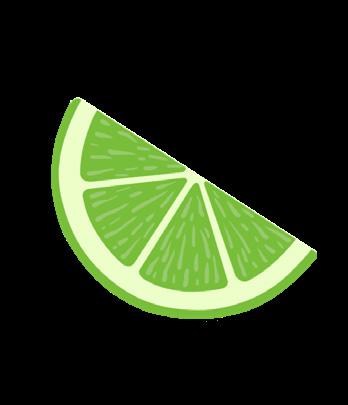
½ tsp / 3 g salt

1 ea medium onion chopped
2 ea medium tomato diced

¼ tsp / .5 g pepper sauce
2 ea green onion sliced, white and most of green part
3 ea cloves garlic crushed
2 ea sprigs of thyme stem removed use only leaves
5. In a large bowl, add onion, garlic, tomatoes, salt, green onion, pepper sauce and thyme leaves, put fish in this bowl and mix to season. Let marinate for about 30 minutes covered in fridge. (This step can also be done hours in advance and kept in refrigerator).
Cooking the Fish
16 fl oz. / 473 ml vegetable oil for frying fish

Flour, cornstarch or arrowroot- enough for dusting the fish for frying
1. Put oil in frying pan or fryer and heat on high.
2. Knock seasoning off fish back into the bowl and dredge entire piece through, dusting off excess. Repeat this with each piece.
3. Add fish to hot oil and fry for about 3 minutes on each side.
4. When cooked, remove and put on a rack or plate with paper towel to drain excess oil.

continue
Blue runner (Caranx crysos)
55
Food name: Blue Runner-Braised in tomato sauce
Finishing the Sauce
2 tbsp / 30 ml olive oil

1¼ tsp / 18 g tomato paste

6 fl oz / 177 ml water
1. In a wide pan or pot, on medium heat, add olive oil.
2. Scrape all ingredients saved in bowl into pan, stirring now and then for about 3 minutes.
3. Add tomato paste and stir until incorporated. Then, add butter, add water and stir, bring to a simmer and add fish.
4. Gently stir fish around in sauce spooning some over the fish, keep a simmer for about 5 or 6 minutes with pan uncovered.
5. Gently move fish around in pan once more. Turn off heat. DONE!
56
Blue Runner Wrap in Banana Leaves - Wanda Pantojas (4 portions)
1. Rub the fish with olive oil, salt and pepper. Keep fish cold.


2. Place the banana leaf over the heat (on top of the burner) to soften until glossy.
3. Cut the leaves into four rectangles.
4. Place the vegetables in the center of the leaves. Season the vegetables with olive oil, salt and pepper.
5. On top of the vegetables, place the blue runner and 3 lemon slices for garnish.
6. Fold the leave lengthwise, turn side toward middle, turn ends down and tie across.

4 ea whole and cleaned blue runners
4 oz / 120 ml olive oil
Salt and pepper to taste
3 ea banana leaves (big size)
2 ea celery stalk, medium, diced
1 ea onion, sliced thin

1 ea red bell pepper, sliced thin
1½ oz / 45 g seaweed

12 ea lemons slices for garnish

7. Bake at 325 grades F. (163 grade C.) for 25 minutes.
Note:
1. Serve with rice and chickpeas, tossed with bacon.
Blue runner (Caranx crysos)
57
Food name: Blue runner wrap in banana leaves
Tripletail Amandine - Cedric Taquín

(4 portions)

Procedure:
1. Season fish, dredge fillets in the flour and pat off excess.
2. In a warm non-stick pan, add oil.
3. Cook the fillets lightly on each side until lightly golden. Immediately add and melt the butter.
4. Add garlic and almonds and gently toast in the hot butter constantly swirling the fillets in the pan and spooning butter and almonds over fillets to finish cooking.
5. Add white wine, lime and parsley to finish. Allow to dry wine and lime for a few seconds while spooning juices on fillets. Serve immediately.
4 – 8 oz / 4 – 227 g portions of tripletail fillets

Salt and pepper to taste
4 oz / 113 g all-purpose flour
6 oz / 170 g butter
2 fl oz / 60 ml white wine

4 oz / 113 g sliced almonds
3 tbsp / 18 g chopped parsley
2ea limes (juice)

1 minced garlic clove, optional
Oil for sautéing
58
Food name: Tripletail Amandine
Tripletail (Lobotes surinamensis)
Plantain Wrapped Rainbow Runner - Cedric Taquín (4 portions)


Equipment: Mandoline
Deep fryer or large pan for frying with fresh oil.
Procedure:
1. Season strips. Using a mandoline, carefully cut the peeled plantain in long thin strips. Line the strips side by side on a flat surface and wrap each fish strip individually. Toothpicks are not necessary, but can be used if desired to pin plantain closed.
8 ea pieces of fresh rainbow-runner strips, about 1”x1”x4”
2 ripe but firm plantains, peeled

salt and pepper to taste
Sauce
3 oz / 85 g minced bell peppers
3 oz / 85 g minced onion

1 minced garlic clove
3 oz / 89 ml extra virgin olive oil
2 tbsp / 30 ml apple cider vinegar
chopped cilantro and parsley
juice of one lime
salt and pepper to taste
2. Pan-fry or deep fry fish and plantain strips in 350º F / 176º C degree oil until plantain is crisp. Normally, when the plantain hardens, the fish inside is done. It will take around 4-5 minutes. Try placing the fish in the pan with the plantain lip down and press with spatula for a few seconds so that they stick together and fry perfectly covering the fish strip.
3. Prepare salsa by mixing all the ingredients and serve with the fish.
59
Food name: Plantain wrapped rainbow runner
Rainbow runner (Elagatis bipinnulata)
Smoked Rainbow Runner with Passion Fruit Vinaigrette - Cory Magras (4 portions)

1. Rub the rainbow runner portions with the vinegar, oil, salt and paprika. Let sit overnight, if possible, or at least an hour.
2. In a roasting pan, spread out the wood chips and sprinkle with water.
3. Place the fish portion on a perforated pan over the wood chips. Place an inverted pan on top the fish to make a seal around the roasting pan.

4. Turn on the burners, and allow the wood chips to reach a smoking point. The hot heat from the flame and smoke will cook the fish. Let it smoke for 15 to 20 minutes. Make sure the fish is thoroughly cooked before serving.
4 ea – 8 oz / 227 g rainbow runner portions (skinoff)


2 fl oz / 59 ml roasted garlic and shallot oil (see recipe below)
2 fl oz / 59 ml white wine vinegar

1 tsp / 3 g salt
½ tsp / 1.5 g paprika
4 cup wood chips (any type, I used apple wood)
Roasted garlic and shallot oil
1 ea small shallot peeled
2 ea cloves of garlic

6 fl oz / 177 ml canola oil
1. In a small saucepan, roast the shallot and garlic in the canola oil until golden brown. Let cool and reserve the oil for the dressing and for the recipe above.
continue
Rainbow runner (Elagatis bipinnulata)
60
Food name: Smoked rainbow runner with passion fruit vinaigrette
Passion Fruit Vinaigrette
4 ea strained and seeded passion fruit pulp
2 tbsp / 30 ml honey
½ tsp / 1.5 g salt

2 fl oz / 59 ml white wine vinegar Reserved roasted garlic and shallot

4 fl oz / 118 ml garlic and shallot oil
1. In a blender, add the passion fruit, honey, salt, vinegar, and the roasted shallot and garlic. Blend until smooth.
2. Slowly add the cooled shallot/garlic oil to emulsify.
Platting the Fish
1. Toss fresh arugula and heirloom tomatoes with the passion fruit vinaigrette. Add some crumbled feta cheese.
2. Top with the smoked rainbow runner.
Garnish with Thai basil!
61
Steamed Queen Snapper in Lemon Butter Sauce with Crucian Fungi (Polenta) - Carlos Farchette

(4 portions)

2 oz / 30 ml lime juice
¼ tsp / 1.5 g salt
½ tsp / 1 g black pepper

¼ tsp / .5 g thyme
¼ tsp / .5 g oregano
1ea sliver scotch bonnet pepper or other hot pepper
2.5 lb / 1.13 k queen snapper, fileted and cut in 4 filet portions

Lemon butter sauce
2 tbsp / 30 ml olive oil
1 ea medium size onion, diced
2 ea cloves garlic, crushed
1 ea stalk celery, diced
½ ea green and red bell pepper, diced

4 oz / 60 g butter
1. In a small pot, heat olive oil and sauté onion, celery, garlic, thyme, oregano, green and red pepper, for about 5 minutes or until translucent.
2. Add butter, scotch bonnet, lime juice, and bring to boil for about 2 minutes.
3. Season queen snapper and place in sauce. Cover and simmer for about 15 minutes or until fish is cooked through. Detach the meat and serve with Polenta. Drizzle with the sauce.
continue
62
Food name: Steamed Queen Snapper in lemon butter sauce with crucian fungi
Queen snapper (Etelis oculatus)
Crucian Fungi (Polenta)

Fungi or polenta is a popular cereal made with cornmeal. Usually served with fish, pork or other meats.
1 qt / 480 ml salted water to taste
2 tbsp / 30 ml butter or oil

3 cups / 537 g fine cornmeal
1. Bring salted water to boil, sprinkle the cornmeal on top while stirring quickly with a wooden spoon or whisk taking care to stir constantly to avoid cornmeal from forming lumps.
2. Add butter or oil and stir again.
3. Reduce heat, cover and simmer for about 2-3 minutes. Serve with fish.
63
Fried Layers of Queen Snapper - Wanda Pantojas
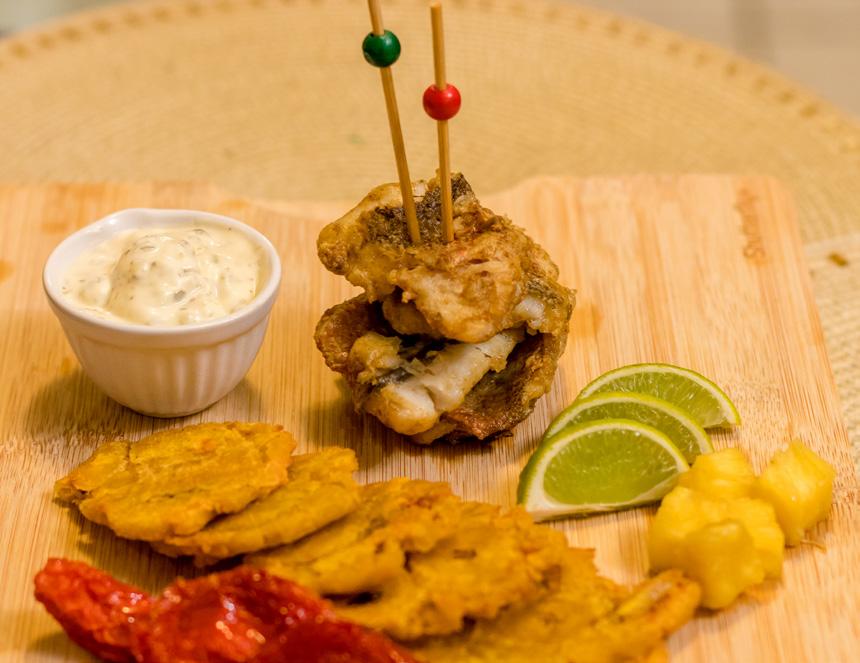
(4 portions)
1. Cut the filets in four pieces.
2. Season the filets, (both sides) with lemon juice, garlic and fish seasoning. Let it rest.
3. Mix the flour and the beer until obtaining a light batter consistency.
4. Heat a pan with oil and drop a small amount of batter to test the heat of the oil.
5. Deep-fry the filets of fish in the batter. Fry for 2 or 3 minutes each side until golden brown.
6. Serve immediately.
Tartar Sauce
2 oz. / 62 g dill pickles
4 ea filets queen snapper

2 tbsp / 30 ml lemon juice


2 ea garlic cloves (mashed)
1 tbsp / 15 g fish seasoning powder
1½ cup /187.5 g flour
8 oz / 237 g beer
1 cup / 200 ml vegetable oil
Paper Towel
1 oz / 30 g capers, chopped
1 oz / 30 g onion, chopped
16 oz / 473 ml mayonnaise

1 cdas / 5g parsley, chopped
1. Press the pickles and capers to squeeze out the liquid. Mix with the onion.
2. Combine with the mayonnaise and chopped parsley in a stainless-steel bowl and mix well.
Queen snapper (Etelis oculatus)
64
Food name: Fried layers of queen snapper
Pan Roasted Queen Snapper with Coconut Yellow Curry, and Soy Roasted Vegetables - Cory Magras (4
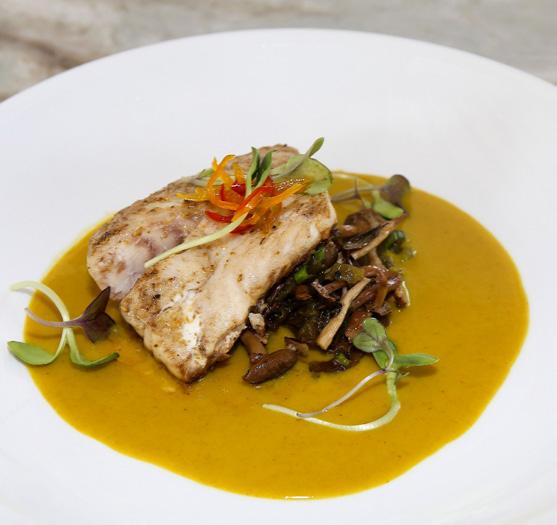
portions)
4 ea 8 oz / 227 g portions of queen snapper fillet (cleaned and scaled, but skin on)

1 tbsp / 15 ml olive oil
1 tsp / 6 g salt
1 tsp / 2 g fennel pollen
1 tbsp / 15 g butter
2 fl oz / 59 ml white wine (Pinot Grigio preferred)
1. Bring a cast iron skillet to a high heat. Coat with the olive oil. Place the snapper fillets skin side down. Once seared to a golden brown, flip the fish over and season with salt and fennel pollen.
2. Add the butter and white wine to the pan and place in a 450º F / 232º C oven for 3 minutes or until fully cooked.

3. Spoon the butter and wine from the skillet over the fish.
4. Serve curry sauce on the plate. Serve roasted vegetables and fish.
Coconut Yellow Curry
12 fl oz / 355 ml coconut milk
1 tbsp / 6 g yellow curry powder
Pinch of salt
1. Bring to a simmer and let reduce by half.
Soy Roasted Vegetables
1 pint of fresh wild mushrooms
3 ea Anaheim peppers
1 tbsp / 15 ml olive oil
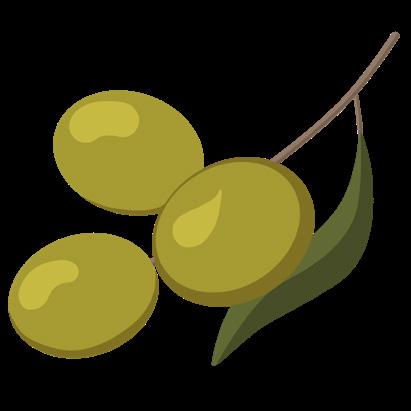
Salt and pepper to taste
3 ea scallions
1 tbsp / 15 ml soy sauce
1. Mix mushrooms and peppers with oil, salt and pepper, and lightly roast. Let cool.
2. Peel and seed the peppers, then chop them and mix them with mushrooms, scallions and soy.
Queen snapper (Etelis oculatus)
65
Food name: Pan roasted queen snapper with coconut yellow curry, and soy roasted vegetables
Annatto Oiled and Grilled Octopus - Cory Magras (8 portions)

Procedure:
1. Bring a large stockpot of water to a boil. Squeeze the juice from the citrus fruit into the pot and add the skins of the fruit to the pot. Add the whole octopus and boil for 45 minutes, then turn the pot off and let it sit for 30 minutes in the hot water. Remove from the water and cool on a baking tray.
2. Remove the head of the octopus and cut off each tentacle.
1 ea. whole octopus

1 ea. lime (cut in half)

1 ea. lemon (cut in half)
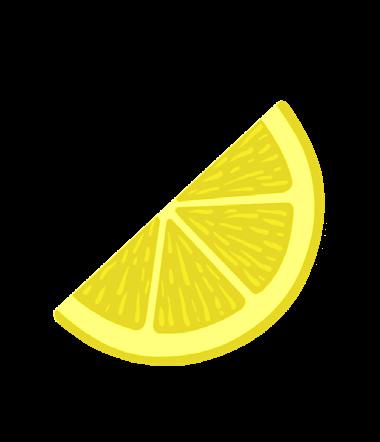
1 ea. orange (cut in half)

3 ea. garlic clove (crushed)
2 gal / 7.5 lt water
4 fl oz / 118 ml olive oil

1 tbsp / 12 g annatto seeds
Salt and pepper to taste
3. In a small saucepot, gently heat the oil and the annatto seeds to extract the deep red color into the oil. Let cool and blend the oil with the seeds. Add a pinch of salt and pepper, then strain the oil mixture.
4. Rub the oil mixture all over the octopus tentacles and let marinade overnight, if possible, for as long as possible.
5. Grill the tentacles over a charcoal grill until charred and have marks. Serve with a lemon aioli and Olive Tapenade.
continue
66
Food name: Annatto oiled and grilled Octopus
Octopus (Octopus vulgaris)
Olive Tapenade
8 oz / 227 g Kalamata olives
3 ea. sprigs of thyme
1 tbsp / 15 ml extra virgin olive oil
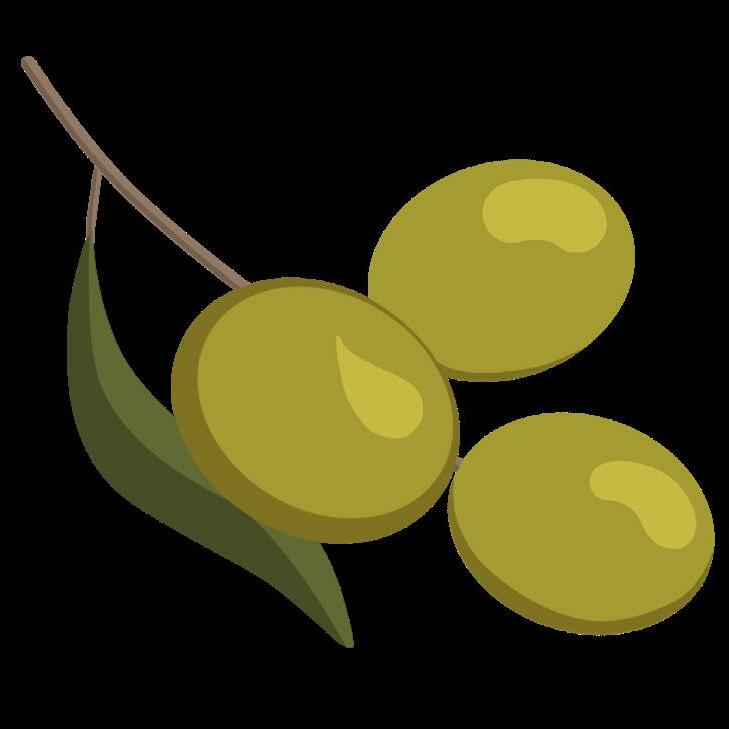
½ tsp / 1 g black pepper
Procedure:
1. Mince all ingredients together and reserve. Do not add salt to the olives as they are usually already salted.
Lemon Aioli

4 fl oz / 118 ml cup mayo
Juice and zest of one lemon
Pinch of salt and white pepper
Procedure:
1. Whisk ingredients together and reserve.
67
Octopus Wet Rice and Octopus Cracklings - Juan C. Vicéns (4 portions)

Octopus Cooking and Preparation
2 ea whole octopus about 4.5 lb / 2 k each. Defrosted (It’s important that the octopus has been previously frozen)
3 gal water


1. Clean the octopus; remove from the inner head, gelatinous membranes, eyes and mouth.

2. Add water to a large stockpot and bring to a boil.

3. Carefully, using a tong, hold octopus by the head and step in the boiling water for 10 – 15 seconds, then remove it from the water and count 10 – 15 seconds, step it back in the boiling water. Repeat 3 times.

4. After returning the octopus to the water, cook it at medium heat for about 45 minutes. Taste for tenderness, using the tip of a knife. If it cuts easily, it is cooked. Otherwise, cook it for some extra time. When done, turn off the stove and let the octopus refresh in the cooking liquid.
5. Remove octopus to a bowl and reserve the stock.
continue
Octopus (Octopus vulgaris)
68
Food name: Octopus wet rice and octopus cracklings
Octopus Wet Rice
2 oz / 59 ml vegetable oil
2 oz / 56 g annatto seeds
6 oz / 170 g yellow onion, diced
6 oz / 170 g bell peppers green and red
2 oz / 56 g garlic, finely chopped
2 oz / 56 g sweet chili pepper, finely chopped
1 oz / 28 g cilantro, finely chopped
2 oz / 56 g alcaparrado (stuffed olives and capers mix)
4 oz / 118 ml tomato sauce
1.5 lb / 680 g Arborio rice
2½ qt / 2.37 lt reserved octopus stock
1 ea cooked octopus, cut in medium size chunks
Salt and pepper (optional) to taste
For Garnishing:
8 oz / 227 g fresh farmer’s cheese, hard churned
2 oz / 56 g all-purpose flour
Oil to fry cheese
1. Toss cheese cubes on flour. Fry in hot oil until golden color. Remove to paper towel, to absorb excess fat. Reserve
2 oz scallions, sliced
4 oz roasted bell pepper cut in julienne
Procedure
1. In a small saucepan, heat the oil and annatto seeds on medium hi heat to infuse oil with color and flavor. Strain and reserve oil.
2. Use a heavy bottom caldron. Add the annatto oil; add vegetables and sauté at medium hi heat for 4 – 5 minutes. Add alcaparrado and tomato sauce and cook additional 5 minutes, stirring occasionally.
3. Add rice, fold and cooked with the vegetables until thoroughly mix.
4. Add 1/3 of the reserved octopus stock. Stirring occasionally, cook until rice absorbs the liquid. Repeat this step two more times. Must be somewhat humid but not soupy.
5. Add octopus chunks and fold it with the rice. Simmer for 4 minutes. Serve, garnish with fried cheese, roasted peppers, scallions and sprig of parsley or cilantro.
Octopus cracklings
1 cu cooked octopus cut in chunks
Salt and pepper optional to taste
1 tbsp smoked paprika
1 tbsp lime juice
1 oz / 30 ml olive oil
12 oz / 340 g all-purpose flour
4 oz / 170 g cornstarch
Oil for frying
Criollo limes wedges for garnishing
Clean plantain or banana leaves are good for a creative presentation.
1. Add the octopus, condiments, olive oil and lime juice into a mixing bowl. Marinate por 30 minutes.
2. Heat oil to 350º F / 177º C.
3. Mix flour and cornstarch in another bowl.
4. Prepare in batches, toss octopus chunks into flour mixture, and blot any excess flour. Fry in the hot oil 3 – 4 minutes.
5. Remove from oil and lay on paper towel to drain excess fat.
Serve with lime wedges.
69
Diamond Back Squid Stew with Chickpeas - Juan C. Vicéns (4 portions)

8 oz / 237 ml tomato sauce
16 oz / 473 ml fish stock
1 oz / 30 ml lime juice
2 oz. / 60 ml white wine
12 oz / 340 g chickpeas cooked and drained
Salt to taste
2 oz / 57 g chopped parsley
2 oz / 57 g chopped cilantro
1. In a heavy bottom pan, add and heat the olive oil.
2 lb / 907 g diamond squid tubes and tentacles clean and cut in rings
2 oz / 60 ml olive oil
3 ea bay leaves
6 oz / 170 g yellow onion, diced
3 oz / 85 g red bell pepper, diced
3 oz / 85 g green bell pepper, diced


1 oz / 28 g sweet chili pepper (ají dulce), chopped
4 ea garlic cloves, sliced
2 oz / 57 g olive caper mix (alcaparrado)
2. Sauté bay leaves, onions, peppers, garlic and olive mix until lightly golden.
3. Add tomato sauce and simmer for 5 minutes stirring occasionally.
4. Add squid and cook for 3 minutes.

5. Add stock, wine and chickpeas, season. Cover and simmer, stirring occasionally for 45 - 55 minutes or until the squid is tender. Add fresh herbs.
6. Serve with white rice, or serve as a tapa in smaller portions.

70
Food name: Diamond back squid stew with chickpeas
Diamondback squid (Thysanoteuthis rhombus)
Stir Fry Diamond Back Squid with Swiss Chard - Wanda Pantojas
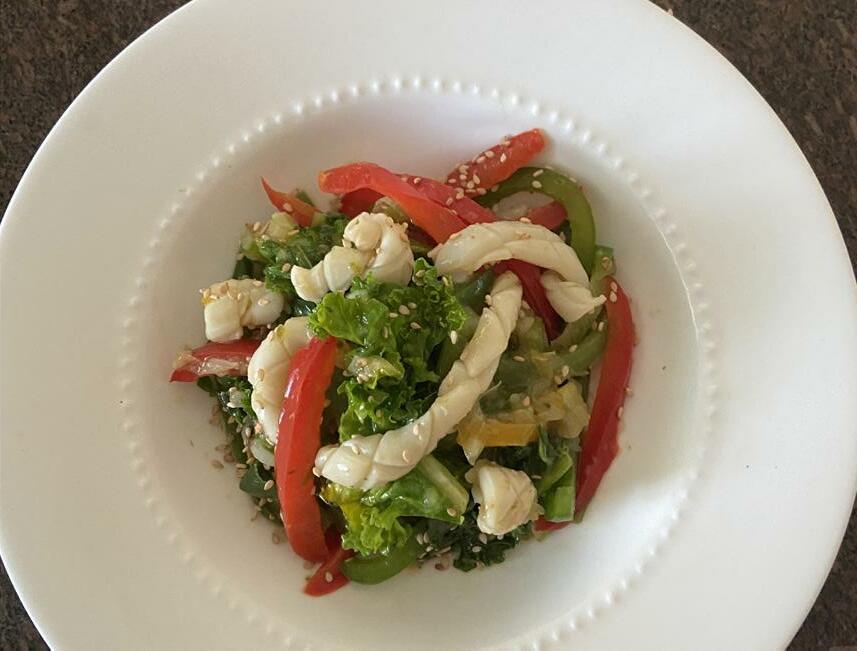
(4 portions)

Method:
1. Score the squid with cross diagonal cuts (superficial marks).
2. Cut in strips.
3. Boil the water, cook the squid with a piece of ginger just for 2 minutes (no more) to prevent the toughness of the product, if not, you will need to cook the squid for two more hours.
4. Shock in the squid in cold water to stop the cooking. Set aside.
5. Heat a sauté pan or wok to stir fry the peppers, green onions and chard.
1lb / 454 g fresh diamond squid
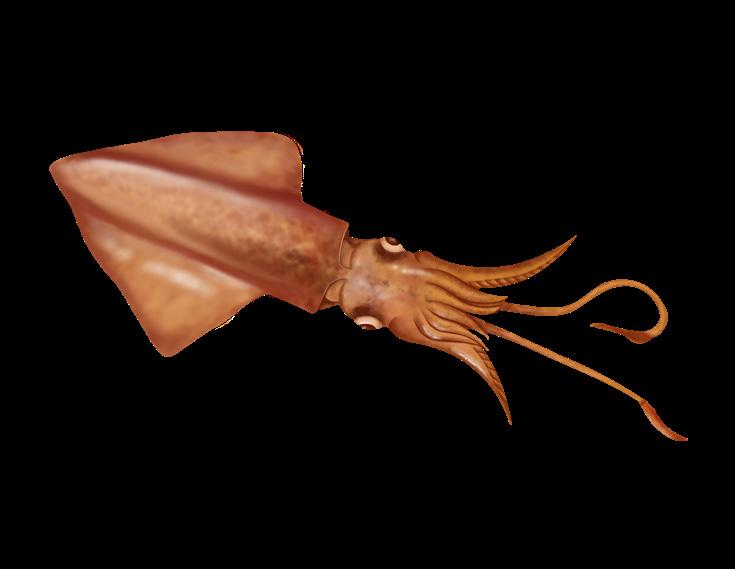
2 qt / 1.90 lt water
1 tbsp /10 g ginger (mashed)
2 ea red bell peppers
1 ea green bell pepper
1½ cup / 185 g green onions
1 bunch green swiss chard
2 cups / 240 g local seasoning (or sofrito)
½ cup / 125ml water
1 tbsp / 7 g cornstarch
Salt and pepper to taste
6. Add the squid and the local seasoning.
7. Mix the water and cornstarch, make a slurry and add to the pan or wok.
8. Move constantly until desirable thickness.

Note:
1. Serve over rice or pasta.
Diamondback squid (Thysanoteuthis rhombus)
71
Food name: Stir fry diamond back squid with swiss chard
Kalaloo - Carlos Farchette
Kalaloo is the national dish of the U.S. Virgin Islands and is quite different from dishes of the same name made in neighboring islands. It is a thick soup or stew made with meats, seafood, vegetables and herbs. It is very nutritious!

1 lb / 454 g cooking ham
1 lb / 454 g pigs’ tail or snout
1 lb / 454 g salted beef

2 ea large tania leaves, yautía leaf
3-cup papalulu leaves papaya leaves
2-cup bata-bata leaves

2-cup white Mary leaves
2-cup fresh okra
Food name: Kalaloo

1 ea medium sized hot pepper, chopped

1½ lb / 680 g queen conch meat
2 ea land crabs
1 lb / 454 g octopus
2 cups fish meat (usually queen trigger or princess parrotfish)

1. Soak salted meats such as the ham, pigtails or snout, overnight. Discard water the next day.
2. Boil meats until tender.
3. Boil conch until tender and set aside.
4. Cook fish, remove bones and set aside.
5. Boil octopus until tender and set aside.
6. Prepare greens: pick leaves from stem wash, drain and grind leaves in blender.
7. Prepare fresh land crab: scrub thoroughly, section and cook in boiling water until shell changes color. Drain.
8. In a large pot, cut up conch and meats and bring to a boil. Add leafy herbs, okra and continue to cook.
9. Add fish and crab sections lastly. When herbs and greens turn a dark color and okra seeds turn pink, the dish is ready to serve. Add salt and pepper to taste. Cooking time being about 2 hours.
continue
72
Kalaloo (substitute ingredients)


The following ingredients, which can be easily found in grocery stores, will give a good approximation of the oldtime Crucian Kalaloo with much less work and a cooking time of about 45 minutes.

1 lb / 454 g fresh ham
2 lb / 908 g spinach, fresh, frozen or canned
2 lb / 908 g collard greens, fresh frozen or canned
1 can 12 oz cooked conch
1 can 8o z crab meat
1 cup cooked fish
Follow directions in original recipe for cooking.
73
SEASONAL CLOSURES
as of 2022
VEDAS
Federal Waters (EEZ)
Aguas Federales (ZEE)

74
Glossary
Air fryer: An air fryer is a small countertop convection oven designed to simulate deep-frying without submerging the food in oil. A fan circulates hot air at high speed.
Ají dulce: Small non-hot chili pepper, used as a staple condiment in various Caribbean cuisines.
All-purpose seasoning: It refers to adobo-style seasoning.
Amandine: Culinary term indicating a dish that contains or it is garnished with almonds.
Anisakiasis: It is caused by a parasite whose larvae can be found in various marine species. They can be present in raw or partially cooked fish.
Annatto: Orange-red condiment and food coloring derived from the seeds of the achiote tree, native to tropical regions from Mexico to Brazil. It is often used to impart a yellow or orange color to foods, but sometimes also for its flavor and aroma.
Apio: Root vegetable original from South America. Commonly used in the Caribbean islands. In local markets is called “Apio del país”.
Bacalaítos mix: Found in Latin markets. It is a quick and ready to use version of a traditional codfish fritter, known as bacalaíto.
Bata-bata leaves: Locally found greens and herbs that grow as a wild shrub with dark green leaf. Leaves are gathered and frozen, or dried and stored in plastic containers.
Biodiversity: Refers to the diversity of organisms, including the processes and connections between them.
Buttermilk: Cultured dairy product. Traditionally made as a byproduct of the elaboration of other dairies. Used for cooking and baking.
75
Cardamom pods: A sweet and savory spice that comes in two varieties: green and black pods. Pods come whole or ground. The two different varieties have different tastes; green cardamom is sweeter, and often used for pastries and coffee. Black cardamom tends to be less sweet, have a hint of smoky flavor and mostly used for savory dishes.
Carpaccio: Finely sliced and pounded meat or fish, traditionally served as an appetizer.
Chutney: Family of condiments or sauces in the cuisines of the Indian subcontinent. Chutneys can be prepared in such forms as a tomato relish, a ground peanut garnish, yogurt or curd, cucumber, spicy coconut, spicy onion or the famous Major Gray mango chutney.
Ciguatera: Food poisoning that can occur when eating contaminated coral reef fish (grouper, sea bass, barracuda, snapper, among others.) When large fish eat small fish that have eaten poisonous algae, they can produce toxic substances known as ciguatoxins.
Dietary Guidelines: This is the 2020-2025 dietary guidelines for Americans, ninth edition (Dietary Guidelines for Americans 2020-2025). It provides simple recommendations for acquiring a healthy diet that meets the nutritional needs of everyone.
Ecological service: Component, function or process of the ecosystem that humans can use for economic benefit, for example, fishers use ecosystem biodiversity to obtain food and income; in addition, the coral reef protects the coast from the waves, preventing economic losses.
Ecosystem: It is formed by the communities that live in a determined place in interaction with the physical and chemical factors, and the nutrients and energy flows that develop between them.
Escabeche: Escabeche is the name for several dishes in Spanish, Portuguese, Filipino and Latin American cuisines, consisting of marinated not taste like fennel seed or weed, so it truly adds a different flavor to food.
Fungi: A cornmeal porridge, traditionally served in the U.S. Virgin Islands and eastern Puerto Rico, to accompany fish dishes. It is known as funche in Puerto Rico.
HACCP: Hazard analysis system and critical control points. It is a system that allows the identification, evaluation and control of significant hazards and guarantees food safety.
76
Histamine: A chemical substance found in some cells of the body that can cause some allergy symptoms in the consumption of some poorly preserved foods. The result can be inflammation to protect the system against possible foreign substances.
Gastrique: Caramelized sugar, deglazed with vinegar or other sour liquids, used as a sweet and sour flavoring for sauces.
Julienne: A culinary technique that consists of cutting the vegetables, with a knife or a mandolin, into elongated and very thin strips, similar to matchsticks.
Kallaloo: The national dish of the U.S. Virgin Islands. It is quite different from dishes of the same name made in neighboring islands. It is a thick soup or stew made with meats, seafood, vegetables, and herbs and is very nutritious and delicious.
Land crabs: A crab that lives in burrows inland and migrates in large numbers to the sea to breed.
LDL: (Low Density Lipoprotein). It is known as “bad cholesterol”, because a high level of LDL allows cholesterol to build up in the arteries of the body.
Maubi: Is a tree bark-based beverage widely consumed in the Caribbean. Made with sugar and the bark of certain species of a tree native to the northern Caribbean and south Florida. Recipes usually include other ingredients as well, spices such as aniseed being very common. Also known as Maví in the Dominican Republic and Puerto Rico, Mabi in Haiti and Martinique and Maubi in the Virgin Islands and Dutch Caribbean islands.
Methylmercury: It is a toxic compound that causes damage to the central nervous system. Many species are related to mercury poisoning (albacore tuna, salmon, sea bass ...).
Meuniere: A French sauce and a method of preparation, primarily for fish. Thus, to cook something à la meuniere is to cook it by first dredging it in flour. A meuniere sauce is a simple preparation—brown butter, chopped parsley, and lemon.
NOAA: National Oceanic and Atmospheric Administration. This agency monitors the conditions of the oceans and the atmosphere for the United States of America.
77
Non-heme iron: Iron of vegetable and non-animal origin. It is found in products like spinach, lentils, lima beans, peas, and apricots.
Nori: Dried edible seaweed used in Japanese cuisine. It has a strong and distinctive flavor. Often used to wrap rolls of sushi and other Japanese dishes.
Old Bay Seasoning: A blend of herbs and spices, originally created in Baltimore, Maryland. Used in fish and seafood cooking.
Panko: (In Japanese cooking) breadcrumbs with a light, flaky texture, typically used as a coating for fried or baked food.
Pigeon peas: One of the most important food legume crops, which grow in the tropical and subtropical climates. It is a drought tolerant and warm weather crop. It was domesticated in India 3,500 years ago. The seeds are used as grains in Africa, Asia and Latin America.
Poppy seeds: Edible part of the poppy flower. Used for cooking and baking.
Sauté: Cooking method that uses a relatively small amount of oil or fat in a shallow pan over high heat.
Scombroid: Histamine poisoning after eating fish in poor condition or improperly preserved. These fish regularly belong to the Scombridae family (bonito, tuna, and mackerel).
Sustainable fishery: A fishery that is harvested at a sustainable rate, where the fish population does not decline over time because of fishing practices.
Smoked paprika: Spice made from dried, smoked and ground red peppers.
Surinam cherry: Also known as pitanga. It is an evergreen shrub or small tree that is known for its attractive fruits, which look like glossy, bite-sized pumpkins. Has a tangy flavor.
Tania leaves/ yautía leaf (Xanthoma sagittifolium): Tropical crop that produces starchy edible roots. The young leaves are used as condiment in various world gastronomies.
78
Tapenade: A provençal paste or dip, made from black olives, capers, and anchovies.
Turmeric: A flowering plant that belongs to the ginger family. It is dried and ground. Used in Asian, African and Caribbean cuisines.
USDA: United States Department of Agriculture, responsible for developing food, nutrition and environmental programs, among others.
White Mary leaves: Green leafy plant, found in the wild in St. Croix, USVI. Leaves are picked clean from the stem, frozen or dried and stored for future use in making Kallaloo.
Wood Chips: Small pieces of non-resinous wood, such as apple, hickory, mesquite, oak, guava etc. Used to add special flavors and to cook food thru smoke.
Zest: Scrape off the outer colored part of the peel of a citrus fruit.
79



FNA20NMF4410008






































 Lionfish (Pterois volitans)
Lionfish (Pterois volitans)














 Wahoo (Acanthocybium solandri)
Wahoo (Acanthocybium solandri)






































































































































